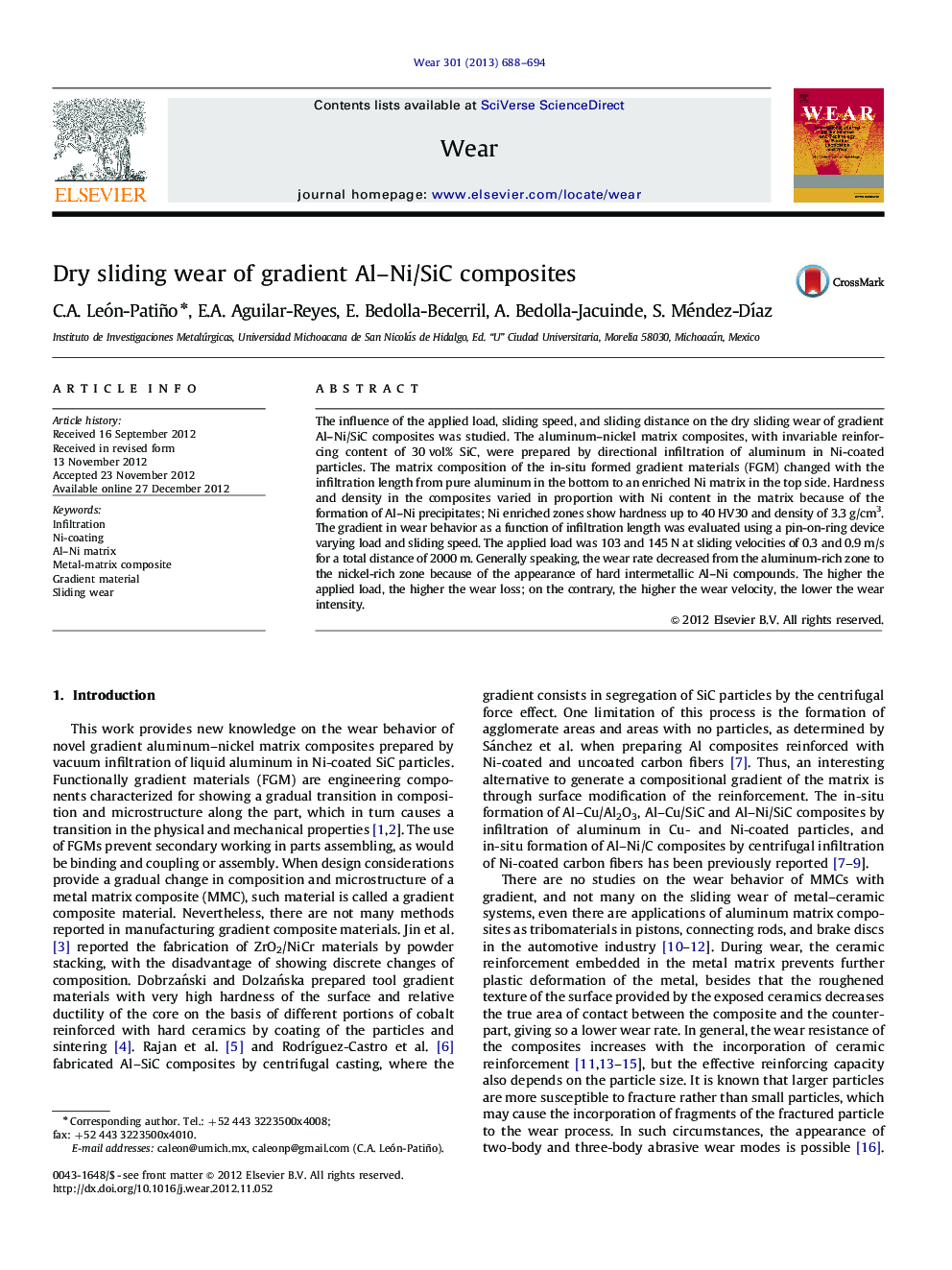| Article ID | Journal | Published Year | Pages | File Type |
|---|---|---|---|---|
| 617581 | Wear | 2013 | 7 Pages |
Abstract
The influence of the applied load, sliding speed, and sliding distance on the dry sliding wear of gradient Alî¸Ni/SiC composites was studied. The aluminum-nickel matrix composites, with invariable reinforcing content of 30 vol% SiC, were prepared by directional infiltration of aluminum in Ni-coated particles. The matrix composition of the in-situ formed gradient materials (FGM) changed with the infiltration length from pure aluminum in the bottom to an enriched Ni matrix in the top side. Hardness and density in the composites varied in proportion with Ni content in the matrix because of the formation of Alî¸Ni precipitates; Ni enriched zones show hardness up to 40 HV30 and density of 3.3 g/cm3. The gradient in wear behavior as a function of infiltration length was evaluated using a pin-on-ring device varying load and sliding speed. The applied load was 103 and 145 N at sliding velocities of 0.3 and 0.9 m/s for a total distance of 2000 m. Generally speaking, the wear rate decreased from the aluminum-rich zone to the nickel-rich zone because of the appearance of hard intermetallic Alî¸Ni compounds. The higher the applied load, the higher the wear loss; on the contrary, the higher the wear velocity, the lower the wear intensity.
Related Topics
Physical Sciences and Engineering
Chemical Engineering
Colloid and Surface Chemistry
Authors
C.A. León-Patiño, E.A. Aguilar-Reyes, E. Bedolla-Becerril, A. Bedolla-Jacuinde, S. Méndez-DÃaz,
